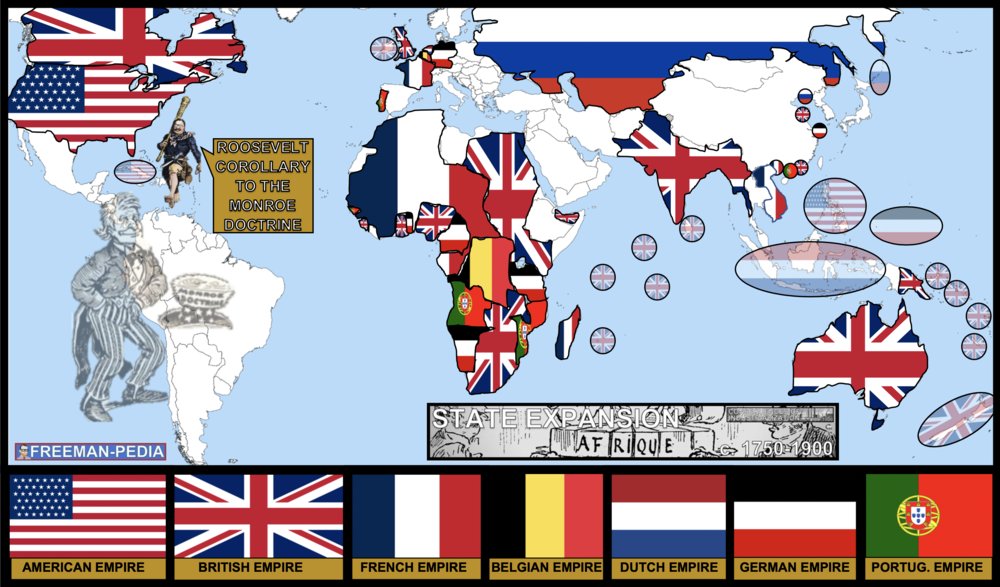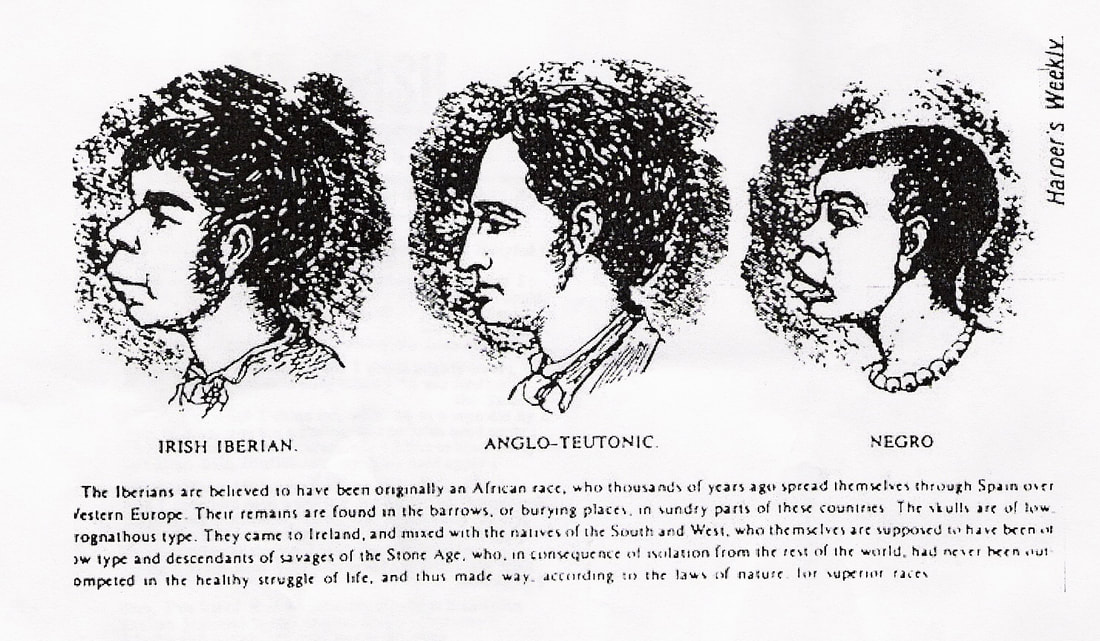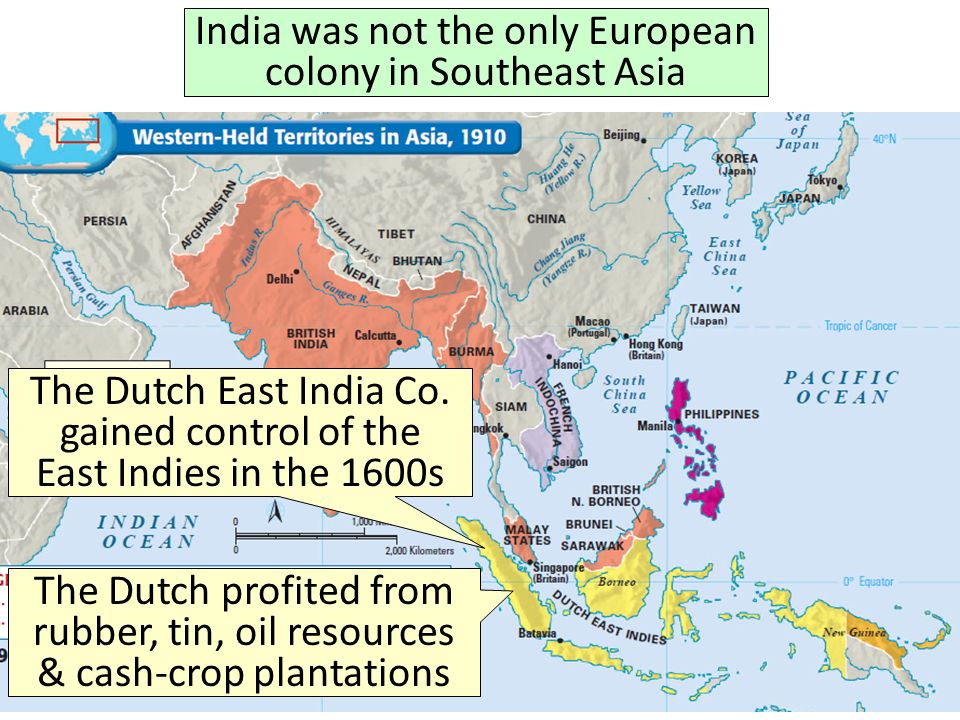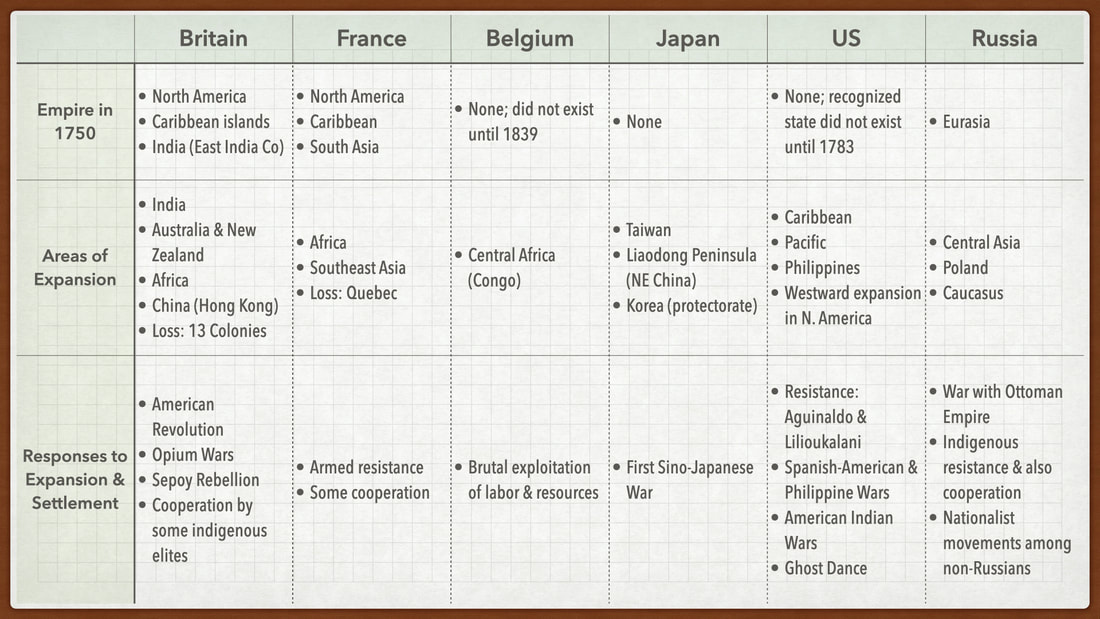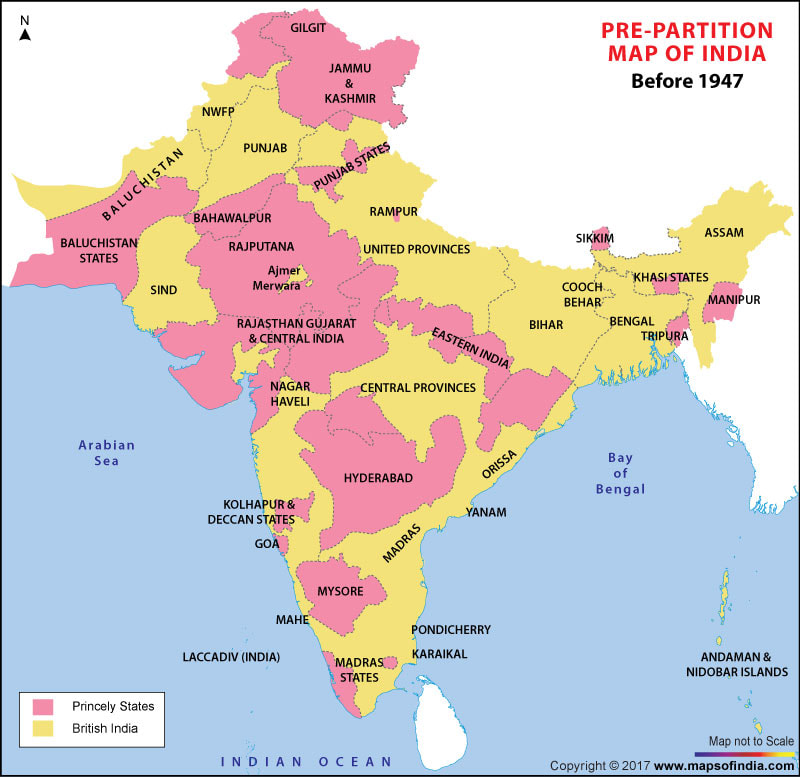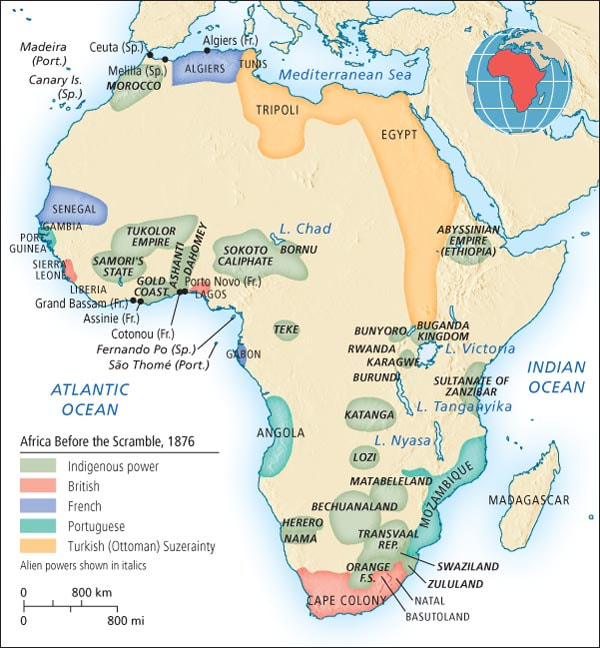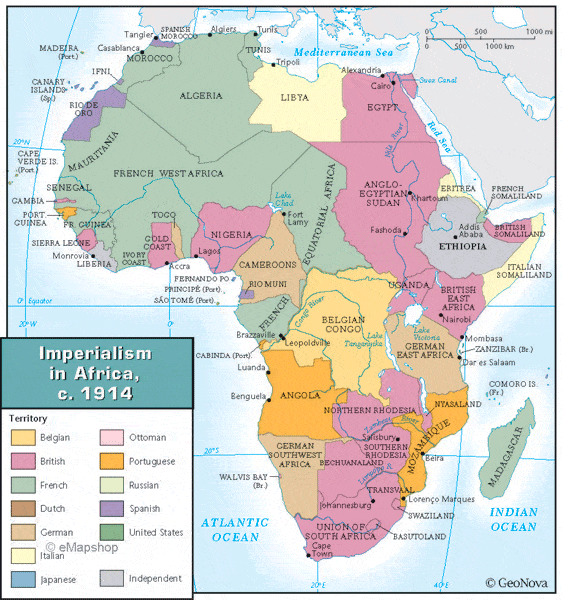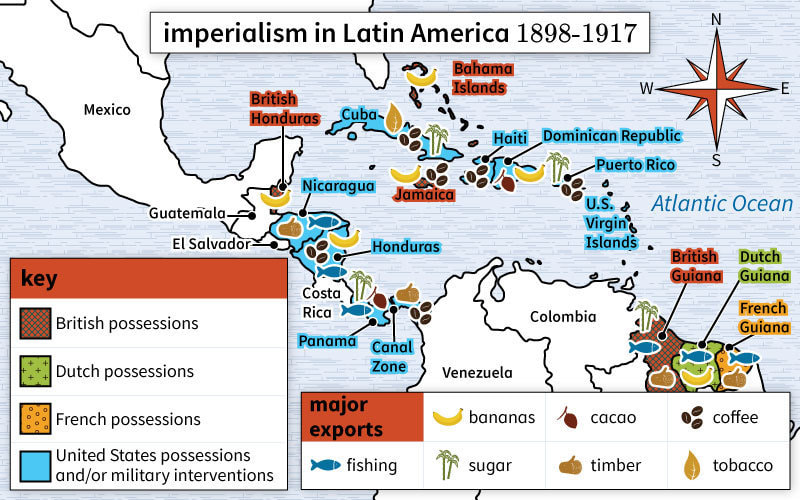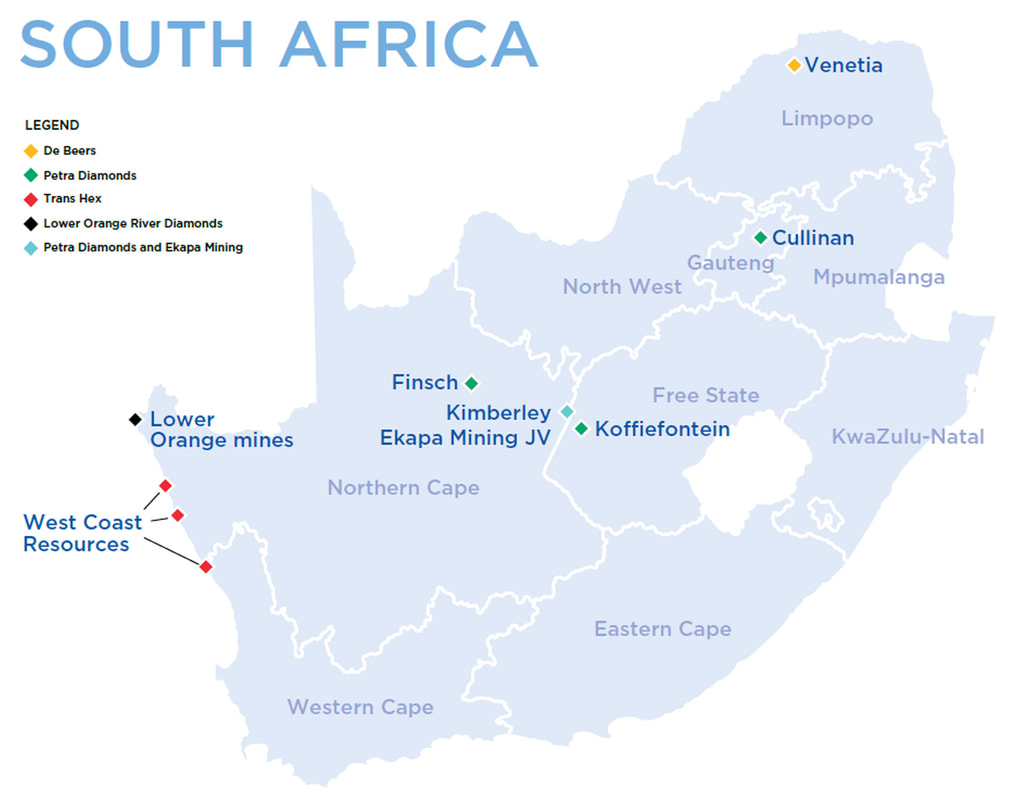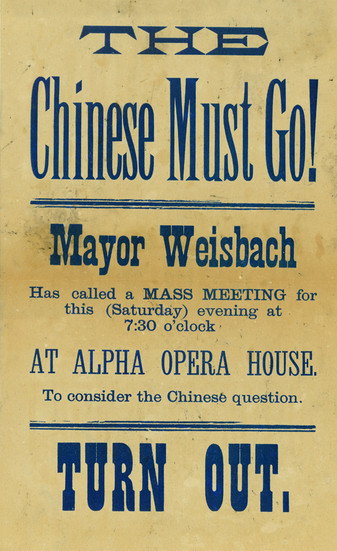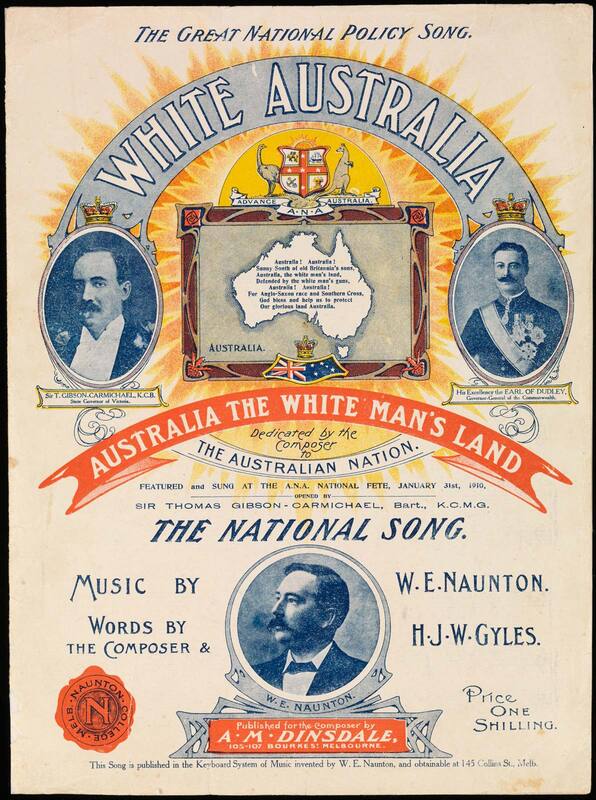6.1 Rationales for Imperialism
Imperialist countries developed rationales for what they were doing. They gave reasons as to why they were building empires by taking control of other places. These rationales were an effect of imperialism, but they also inspired even more expansion, especially by countries such as Germany, France, and Britain, who competed against each other in an effort to build bigger empires.
As the 1800s went on and Europeans began taking over more territory in Africa and Asia, these rationales became more racist. The publication of Charles Darwin’s On the Origin of Species had effects beyond biology. Some imperialists adopted ideas called Social Darwinism. Social Darwinists believed that people and countries were more or less successful based on their biological qualities. They saw international relationships as contests in which the fittest survived and thrived. This justified imperialism, as imperialists told themselves that their conquests were natural. In fact, Social Darwinism encouraged imperialism, as nations wanted to prove that they were the fittest by controlling other places.
|
Similarly, another idea that imperialists used to justify their idea was called phrenology. It was a racial 'science' that argued that racial superiority of certain ethnic groups depended on the size and shape of their skull.
While Social Darwinism and phrenology were racist rationales for imperialism, other rationales were more cultural. European and American imperialists sometimes justified their expansion as helping others by spreading Christianity. French imperialists claimed that their conquests were part of a civilizing mission. |
6.2 State Expansion
|
Imperialism means the belief in and commitment to the importance of empire. During this time several industrialized nations took control of additional territories.Some of these imperialist states built on existing maritime empires; for instance, Britain and France both had colonies in the Americas and Asia in 1750. France lost its North American colonies to Britain but conquered new colonies in Africa, Asia, and Oceania. Britain lost some of its North American colonies when the United States became independent, but they also conquered new territories in Africa, Asia, and Oceania. The British and Dutch East India companies also controlled territories in Asia at the beginning of this period. In both cases, these private possessions became state colonies as the Dutch East Indies (1800) and the British Raj in India (1858).
|
Moreover, new states created overseas empires in this period. Belgium, Germany, and the United States all came into existence after 1750 and established colonies overseas in the 1800s. While Japan had long existed, it industrialized and expanded into mainland and island East Asia only after the Meiji Restoration of 1868. Expanding empires met resistance from indigenous people and other states. Japan defeated China in the First Sino-Japanese War for instance; and, US troops fought rebels in the Philippines for several years after defeating Spain in a few months.
Settler colonialism was the most extreme form of imperialism. Settlers from imperialist countries took land and resources from indigenous people with the backing of their states. The United States is a classic example, as are British settler colonies in Australia, Canada, New Zealand, and some parts of Africa. Russian and American territorial expansion were also examples of settler colonialism.
6.3 Indigenous Responses to State Expansion
India
|
Indigenous people responded to imperialist invasions and pressures in a variety of ways. In some cases, indigenous elites cooperated with imperialists in exchange for authority and opportunities for profit. In 1857, Indian soldiers employed by the East India Company with support of the leaders of independent Indian states rebelled against British control. This event is known by many names, including the Indian Rebellion of 1857, the Great Rebellion of 1857, First Indian War of Independence, Indian Mutiny, and Sepoy Mutiny. The British defeated this rebellion, leading to India became a crown colony. The British Parliament decided that company rule was not enough to maintain control over the subcontinent and declared the Queen of England to also be Empress of India.
|
Africa
In West Africa, armed groups resisted Europeans attempting to expand into the interior. Samori Touré led Islamic forces successfully against French expansion for several decades. Similarly, the Ashanti Empire resisted the British for most of the 1800s, including during the Yaa Asantewaa War.
New states resisted empires as well as existing states. In the Balkans (southeastern Europe) new nation-states, such as Greece and Romania, broke away from the Ottoman Empire. In Africa, the Sokoto Caliphate (West Africa) and the Zulu nation (Southern Africa) formed in resistance British Expansion.
The Xhosa Cattle-Killing Movements was a similar religious response to displacement from British and Dutch settler colonialism in Southern Africa. In northeast Africa, the Mahdist wars combined traditional Islam with a military organization in opposition to Anglo-Egyptian control of Sudan.
New states resisted empires as well as existing states. In the Balkans (southeastern Europe) new nation-states, such as Greece and Romania, broke away from the Ottoman Empire. In Africa, the Sokoto Caliphate (West Africa) and the Zulu nation (Southern Africa) formed in resistance British Expansion.
The Xhosa Cattle-Killing Movements was a similar religious response to displacement from British and Dutch settler colonialism in Southern Africa. In northeast Africa, the Mahdist wars combined traditional Islam with a military organization in opposition to Anglo-Egyptian control of Sudan.
The Americas
American Indian resistance to Euro-American expansion was another form of anti-imperialism. The Cherokee Nation was a new state formed in response to imperialism at the beginning of this period. At the end of the period, the United States, had evolved into a much more powerful state. The Ghost Dance movement on the Great Plains used a new religious vision to oppose cultural imperialism. Other indigenous people organized armed resistance to expanding empires throughout this period. In 1780 an Indian leader from the Andes took the name Tupac Amaru II led a bloody revolt against the Spanish Viceroy of Peru that shook, but did not break imperialist control
6.4 Global Economic Development
The expansion of empires and the growth of industrial capitalism greatly increased global exchanges. Businesses from industrialized countries benefited from imperialist power over other parts of the world, especially in pushing colonized or dependent regions to focus on exporting commodities. A commodity is a raw material or primary agricultural product that can be bought and sold in large quantities.
Industrializing countries needed food to feed people in large cities. New technology, like refrigerated shipping compartments, made the shipment of foods, like beef from Argentina and Uruguay, possible across large distances.
|
Guano, bird excrement, much of it produced upon islands off the coast of Peru, was an excellent fertilizer that increased agricultural production in imperialist countries that supported mining. There was so much poop on these islands that it could be mined! Similarly, raw materials used by industries were mass-produced and shipped globally, to the benefit of businesses in imperialist countries. For example, British factories used cotton from colonial Egypt and India.
The machines in many factories may have used belts made from rubber produced in the Belgian Congo and may have been lubricated with palm oil from the British colony of Nigeria.
|
|
In 1869, some Afrikaaners in South Africa discovered diamonds there. This finding is known as the Kimberley diamond strike, and it caused a rush of European settlers and investors. The result was the world’s largest open-pit mine dug by hand, forced labor from Africans who did the digging, and enormous profits for a few investors, such as Cecil Rhodes. Rhodes became so wealthy that he started his own colony in southern Africa, Rhodesia (today: Zimbabwe and Zambia). Imperialists in African and India also used state power, such as taxation or drafts, to coerce laborers to work on transportation networks, especially railroads, used to export these commodities to ocean ports.
|
6.5 Economic Imperialism
|
Military and political pressure from imperialist countries created advantages for capitalists who lived there. Using political pressure to produce advantages for investors is a form of economic imperialism.
When China outlawed the importation of opium from British-controlled India, the British government went to war with China to force them to accept these addictive drugs sold by their merchants. Despite killing Chinese people so that their businesses could sell drugs in their country, the British also continued to insist that their imperialism was a force for morality and human progress. Britain’s victory in the First Opium War (1839-1842) not only allowed British firms to sell opium in China but also resulted in an unequal treaty that granted Britain special trading rights in China and led to Hong Kong, an island just off the coast of southern China, becoming a British colony. Other countries, including France, the US, Germany, and Japan signed similar treaties with China that forced the East Asian country to accept foreign products.
|
Investors from imperialist countries made profits from resources extracted in other countries. American and British capitalists operated copper mines in Mexico and Chile. Profits from these mines flowed out of the country where the copper was mined. Similarly, British investors controlled and profited from transportation developments including the Suez Canal in Egypt and the Port of Buenos Aires in Argentina.
6.6 Causes of Migration
Transportation
|
Long-distance migration expanded greatly during this time period. The reasons in some ways were simple: the world population grew and transportation methods advanced. More people and bigger ships led to more migration. Most migrants were moving within or from Europe and Asia, and many were laborers.
Industrial transportation (largely from the help of steam) made long-distance travel more affordable via ships and railroads. Some Italian migrants crossed the Atlantic twice a year from southern Europe to Argentina and back, working harvests in the northern and southern hemispheres. Laborers from Japan crossed the Pacific and worked in sugarcane fields in Hawai’i. Merchants moved, too, such as Lebanese business owners in the Americas.
Some of this movement was part of global urbanization as millions of people moved to cities. In Ireland, rural migrants moved to cities in the United Kingdom, but many others crossed the Atlantic to relocate to Boston, Buenos Aires or New York. These migrants were most often seeking employment in industrial economies. |
Labor
Coerced labor continued during this period. The late 1700s were the peak decades for the Trans-Atlantic Slave Trade. Even after the British and the US banned the slave trade in 1807, other nations continued through the 1800s. The slave trade did decline in the 1800s, but coerced labor did not. Migrants from India and China were often indentured laborers with few rights. These migrants often worked on plantations in the Caribbean or the Indian Ocean. The British also used convicts for labor in their colonies in the Indian Ocean and Australia, as did the southern states in the US, albeit in a highly racialized form.
Imperialism
Imperialism also facilitated these long-distance migrations. Many migrants moved within empires, such as Vietnamese workers in French Indochina moving to Paris or indentured Indian laborers moving from the British Raj to British East Africa.
6.7 Effects of Migration
Gender
All this migration changed societies in both the sending and receiving societies. Gender imbalances occurred at both ends of the migration process as more young males migrated than other demographic groups.
New Communities
Immigrants often lived near or with people from the same region in their new countries thus forming ethnic enclaves. The many “Chinatowns” in cities around the world were prominent examples of this, as were Indian communities in Africa and neighborhoods in American cities with immigrants from the same regions.
Racial Hierarchies
Settler colonies created social hierarchies based on modern ideas of race. When migration from Asia into white settler states began, white elites in some of these states responded with racist restrictions, most prominently the Chinese Exclusion Act (US) and the White Australia Policy.
